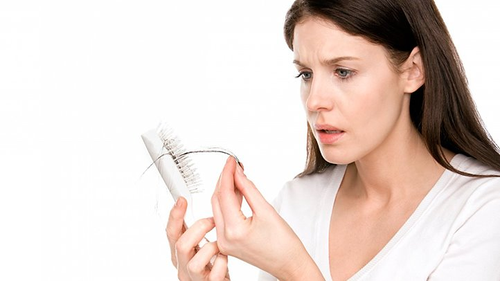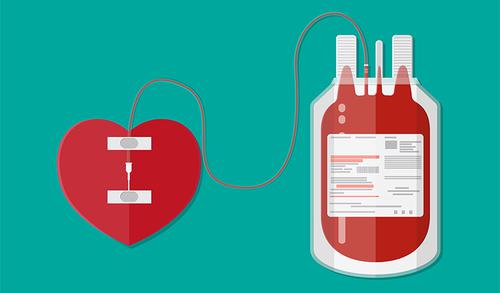Iron Deficiency? Take a Look at This!
Life could not run without an indispensable element called iron. Iron is essential for the formation of red blood cells or RBCs, which are responsible for carrying oxygen from lungs to body tissue and carbon dioxide back to the lungs. Deficiency of iron in our diet leads to the ineffective formation of red blood cells, known as iron deficiency anemia.
Low iron levels are detected by finding out hemoglobin (Hb) concentration in the blood. If the Hb is less than 13.5 g% in males and less than 11.5 g% in females, it is termed as anemia. It is more commonly seen in females due to menstrual blood loss. Some of the other causes include worm infestation of the gut, poor nutrition, malabsorption of iron etc.

What Are the Ways to Treat Iron Deficiency Anaemia?
1. Get more iron in your diet
Only 10% of the iron we ingest is absorbed into the bloodstream. Hence, if you are suffering from iron deficiency anemia, make sure to consume iron-rich foods in a good quantity. Some of the best sources of iron are:
- Tofu
Derived from soy, half a cup of tofu provides around 3.6 mg of iron. It is also a good source of proteins. However, people allergic to soy should avoid consuming tofu. Instead, they could resort to other sources of iron available.
- Shellfish
Another great option for non-vegetarians is shellfish, especially mussels and oysters. 100 gm of shellfish contains a whopping 28 gm of elemental iron.
- Vegetables
Spinach, kale, and other green leafy vegetables are rich in iron content. Make sure to include these in your diet daily. To enhance the absorption of iron, add a source of vitamin C along, such as lemons, oranges, and other citrus fruits.
- Legumes
Another important source of iron for vegetarians and vegans are legumes like chickpeas, lentils, soybean, peas, etc. They also provide a good amount of folate, which is another essential nutrient when it comes to the formation of healthy blood cells.
- Red meat
If you are someone who can eat meat, red meat is one of the good sources of iron which easily accessible. Red meat provides heme iron which is the type of iron derived from animal products. It is more easily absorbed by the body as compared to non-heme iron, which is derived from plant sources.
2. Supplements in the form of tablets
If the levels of Hb are low and dietary modifications are not enough to compensate for the iron deficiency, supplements in the form of tablets can be taken. How long iron tablets take to work is mentioned in the later sections.
3. Iron therapy
Iron is a gastric irritant. On taking iron supplements, you may experience gastric discomfort, acidity, nausea, vomiting, blackening of stool and constipation. This intolerance to iron tablets necessitates the use of iron therapy in the form of iron sucrose and iron dextrose, where iron is introduced directly into the body via the intravenous route.
4. Blood transfusion
Severe iron deficiency can be corrected with the help of blood transfusion after matching the blood type of the donor and the recipient.

Signs That Iron Supplements Work
If you have taken iron supplements, how could you know they work? Here are 6 signs that indicate they are increasing your iron levels.
- Relief of sore mouth and tongue
Ulcers on the mouth, swollen, bruised, smooth tongue and dryness of mouth are commonly seen in severe iron deficiency states.
- Less hair on your hairbrush
There is less hair on your hairbrush than on your head. Hair loss is the most dreaded effects of iron deficiency anemia, especially terrifying for women.
- Don't feel tired all the time
One of the most common complaints of people suffering from iron deficiency anemia is tiredness. In the state of severe deficiency, you may even feel sleepy all the time and lose your drive to work. This is due to an insufficient amount of oxygen delivered to the body tissues making them function less efficiently. Getting your energy back after you start iron therapy is one of the signs that iron supplements work.
- Skin looks better
The healthy glow in our skin and the natural flush in our cheeks is largely due to high hemoglobin content in the blood. Iron deficiency anemia steals away this natural, vibrant looking skin. You may find yourself getting pale. Your skin may look dull and lifeless, no matter what treatments and cosmetics you apply on your skin. If the iron supplements you take work, your skin will look better than before.
- Headaches are less than before
Do you seem to get headaches due to no apparent reason? Do you often find yourself light dizzy, even though you've had your meals properly? The chances are that these headaches and episodes of dizziness are caused due to iron deficiency anemia.
- Your hands and feet become warmer
Due to inadequate oxygen delivery, especially to the extreme ends of the body, i.e. the hands and feet, the metabolism in their cells is slower. This leads to lesser heat productions as compared to other body parts. As a result, you always find your hands and feet cold, no matter how many layers of gloves and socks you wear.
How Long Does It Take to Get Iron Levels Up?
When you experience low iron levels, you may want to increase them at one go. But you should know it needs some time to recover to the normal range. Then how long could you expect to get iron levels up?
1. When can you expect improvement?
After beginning with the treatment, iron deficiency anemia ideally takes some time to resolve. Within 3-4 weeks, you will begin to feel better, your energy level will rise, and changes will start showing on your skin. Complete improvement takes about 6-8 weeks depending upon how low your hemoglobin levels below the normal range.
2. Factors which influence improvement in symptoms
- Quality of supplements
The quality of supplements you take is an important factor which determines your compliance to the treatment and how quickly your iron levels go up. The bioavailability of iron, i.e. the amount of iron absorbed from the stomach, is more for amino acid chelated iron than for inorganic forms of iron supplements. According to a study conducted, ferrous sulfate (an inorganic form of iron) has the bioavailability of 26% and that the of the ferrous bis-glycinate chelate is around 90%.
- Dosage
Depending on how low the Hb levels are, the dose of iron supplements varies from person to person. As stated above, only 10% of the iron consumed is absorbed into the bloodstream. Hence, to increase the amount absorbed, the dosage has to be increased as well.
- Absorption
Some food substances improve the absorption of iron while other hamper it. Included in the former category are citrus fruits like lemons, Indian gooseberry, and oranges, tomatoes, etc. Substances that hamper the iron absorption are phytates and tannates found in tea and coffee. Avoid coupling the iron supplements and iron-rich foods with the latter food group.
To Sum Up
Iron deficiency anemia presents with symptoms like lethargy, tiredness, mouth ulcers, pale skin, headaches, and pica. If you are experiencing any of these symptoms, consult your doctor regarding the treatment which includes iron supplements, iron therapy, and blood transfusion. Make sure to incorporate iron-rich foods in your diet. After around 4-6 weeks of commencing the treatment, you will begin seeing improvements and signs that iron supplements work.
YOU MAY LIKE
-
Best Antidepressant for Weight Loss - Top Tips for You
-
Things to Have in Mind Before Stopping Statins
-
What Is the Best Diet to Follow When Having Antibiotics?
-
What to Do if You Overdose on Ibuprofen
-
Why Does Iron Turn Stool Black - Facts You Must Know
-
The Effects of Adderall to Your Body
-
Things About Primolut N You Must Know
-
Facts About Steroid Shots for Sinus You Must Know
-
Antibiotics! Some Harmful Aspects and Prevention Tips
-
Effects of Over-The-Counter Medications on Your Blood Pressure
